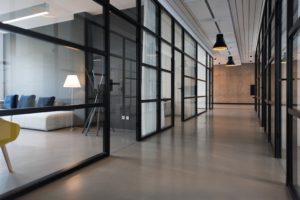When’s the best time to exercise your stock options? With stock options, employees have the right (not obligation) to buy the shares. When you exercise your stock options you purchase company shares. Though early exercises are possible, the default setup is for employees to first have the options to exercise when the shares vest. The timing of when you exercise your stock options is important as certain situations can be far more advantageous from a tax and financial standpoint than others.
But before purchasing shares, startup employees need to be aware of the potential tax implications. There’s no one best time to exercise stock options, and just because you can, doesn’t mean you should.
This article will discuss some of the pros, cons, and key factors to consider when considering how and when to go about exercising options.
Understanding stock options
If you are new to managing stock options, please refer to this article on how stock options work. Basically, stock options are a form of equity compensation that grants employees the right to buy company shares at a predetermined price, called the strike price or exercise price. Designed as an employee retention tool, stock grants have vesting schedules. Shares vest over time, typically four years. It’s common to have a one-year cliff (perhaps 25%) and then monthly vesting thereafter.
There are two main types of stock options: incentive stock options (ISOs) and nonqualified stock options (NSOs). Each has different tax implications.
Both types of options will have an expiration date that is no more than ten years from grant. But keep in mind, if you leave the company, your exercise period will be shorter. In this case, you’ll typically only have three to six months to consider exercising your options before losing the vested in-the-money value and potential investment or liquidity opportunity.
Tax implications of exercising stock options
Why does the timing of stock option exercises matter? Taxes, for one. The tax implications of an options exercise will depend on the type of stock options you have. If you are new to stock options, please review the article below for a more robust discussion on how stock options are taxed at exercise.
Infographic: How Stock Options Are Taxed
Incentive stock options
Incentive stock options (also called statutory options or ISOs) have tax benefits if the holding period is met. However, exercising and holding shares through the end of the calendar year can trigger the alternative minimum tax (AMT). This mostly happens when there’s a big spread between the market value of the stock at purchase and the strike price.
AMT tax rates range between 26% -28%. The employer is not required to withhold any amount at exercise or sale to cover any potential tax liability. Think about the AMT like pre-paying tax. In future years when not subject to the AMT, you can receive an AMT tax credit.
6 Tax Strategies for Incentive Stock Options and AMT (Advanced!)
Tax after exercise: If you hold the shares for at least 2 years from the grant date and 1 year from exercise, the entire gain will be taxed at more favorable long-term capital gains tax rates. Different tax treatment may apply in other situations, including state taxes. This can be quite complex, particularly if you’ve moved since the option grant.
Nonqualified stock options
With nonqualified (also called nonstatutory options and NSOs), at exercise, the spread between the value of the stock price and the strike price is subject to ordinary income tax. Federal income tax withholding is generally required at the time of exercise. If the spread is under $1M, the federal statutory withholding rate is 22%, if above, it’s 37% through 2025. State income tax withholding may be required and payroll taxes (Social Security and Medicare) can apply.
Tax after exercise: Any subsequent gain or loss on the company stock from the date of exercise is a short or long-term capital gain/loss depending on your holding period.
How to exercise stock options
There are usually up to three ways employees can exercise stock options. For simplicity, assume the strike price is $1, current market price is $5, and there are 100,000 stock options. Taxes will be ignored, but note that any required withholding can often be met using the same exercise method.
- Monetary. Buy shares with cash. Startup employees will have a short form to fill out (see your grant). Example: write a check for $100,000, receive shares of the company’s stock currently worth $500,000.
- Surrender shares to pay for the stock and receive the net amount of shares. This is often called exercise and sell-to-cover or net exercise. Example: 20,000 shares are immediately sold to cover the $100,000 purchase price; the company delivers you 80,000 shares (currently worth $400,000).
- Simultaneously exercise and sell everything and receive cash, less the cost of the shares. This is often called exercise and sell or cashless exercise. Example: 100,000 shares are immediately sold and you receive $400,000 cash.
Typically, a company must be publicly traded for options two and three. But exceptions exist. For example, when a private company does a tender offer, it’s usually a cashless transaction, but any new exercise and holds are still monetary.
Deciding when to exercise stock options at startups, pre-IPO, or private companies
Most decisions around equity compensation are complex as it involves many aspects relating to your personal circumstances/grant. Keeping all this in mind, here are several key factors to help inform your decision about the timing of your stock option exercise.
The most advantageous time to exercise your stock options
What’s the best time to exercise stock options if you work for a startup? In the optimal scenario, employee exercises occur at a time when:
- The strike price is very low (like pennies), thus minimizing the cash outlay
- The strike price is equal (or very close) to the market price (essentially the 409a value), thus minimizing or negating taxes
For early startup employees, stock option grants often have a very low strike price, as the company is new, so the fair market value reflects that. This makes buying the shares quite affordable and reduces risk for the option holder if the potential upside never materializes. And when the spread between the exercise price and current value of the stock is small or zero, it’s a huge advantage for tax purposes, as there won’t be any federal taxable income for NSOs or AMT income for ISOs.
Another bonus: if your shares meet the initial criteria for Section 1202 Qualified Small Business Stock, exercising may be imperative to increase the likelihood that your shares may ultimately qualify for a federal capital gains exclusion of up to 100%!
Since the fact pattern won’t align for all employees, it’s important to discuss your employer grants and financial situation with your financial and tax advisor.
Can you exercise your stock options before they vest?
If the plan allows for it, yes you can. It’s called an early exercise. Especially when the timing is “ideal” as explained above, it’s worth considering an early exercise of unvested stock options.
When you exercise early, you purchase shares before they vest, potentially locking in favorable tax treatment (often with the help of an 83(b) election) and starting the holding period. There are other considerations though, so learn more about how it works (and which type of options are better candidates) before exercising options early.
Exercising stock options at a public company
Employees of public companies have much more liquidity than their private counterparts. But there will still be important decisions for the option holder to make. Since markets move daily, the tax consequences can be harder to predict.
But with that liquidity comes more regulation. Public companies have blackout periods around earnings releases or other big events. But this usually just prohibits sales or cashless exercises. In this situation, the only choice might be exercising your options with cash…but then outside money may be needed to pay tax at exercise for NSOs.
Special Considerations Before Exercising Options Right Before an IPO
Finally, employees with material non-public information (insiders) may not be able to sell even when not subject to a blackout or lockup period. Perhaps the best solution here is adopting a 10b5-1 plan. A complete discussion of 10b5-1 plans is outside the scope of this article.
Strategy for incentive stock options: exercising in January or December can be a good strategy to manage the AMT impact. By exercising in January, you can assess your entire tax situation at the end of the year and decide whether to sell the stock before 12/31 to avoid triggering AMT, or at the very least, calculate your exposure before it’s too late. Exercising ISOs in December follows similar logic.
Support from stock option specialists
Having a lot of stock with your company can be a tremendous opportunity to build wealth. But paper profits can evaporate without a tax and financial strategy in place.
This may be your first time exercising stock options, but it’s not ours! Darrow Wealth Management specializes in helping individuals with stock options before a liquidity event. Contact us to schedule a call and discuss your situation.
Last reviewed January 2025











